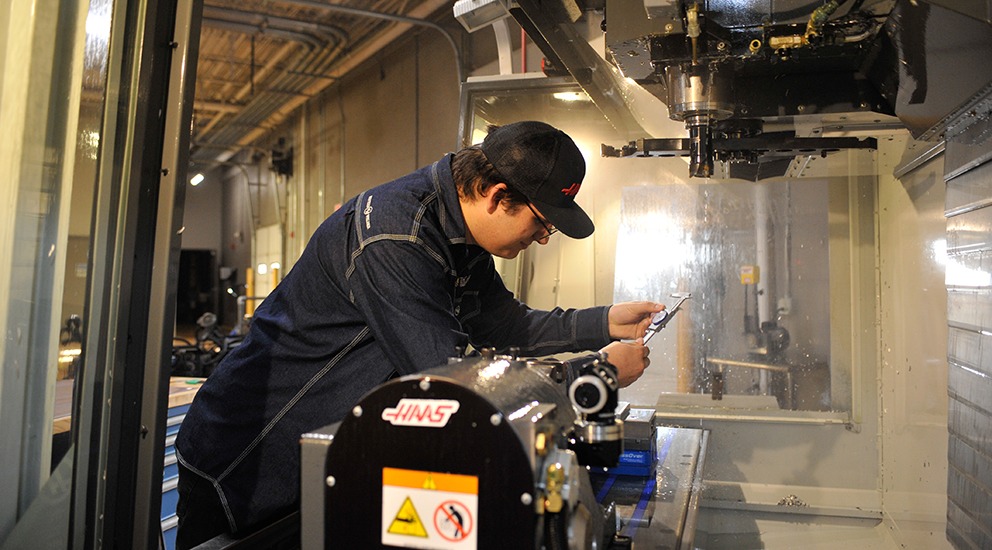
Where Elementary Students Learn CAD/CAM Programming Skills
At Captain Leland F. Norton Elementary School in San Bernardino, California, computer programming has become an integral part of their STEM program, all the way up to and including Mastercam. From kindergarten through sixth grade, the school’s goal is to show the young students that what they learn in their STEM program relates to real-world jobs.
Quick Facts
Product Used: Art, Educational Suite
Industry: Education

Project Details:
- The Challenge: Open the eyes of the children to the many ways in which computer programming affects the manufacturing of things around them and encourage them to have fun learning increasingly complex CAD/CAM applications.
- The Solution: A range of CAD/CAM software solutions including Mastercam Art and Mastercam Educational Suite.
- The Benefits:
- Abundant support for teachers using Mastercam
- Easy for young students to grasp
- Stepped for advancement to more complex projects
- Keyed to optimize CNC machine tools
The programming journey begins in kindergarten and extends into second grade using free online software tools that allow Leland Norton’s beginners to design a wide range of projects. In the third grade,” Elizabeth Cochrane-Benoit, the school’s principal shared, “we move into CorelDRAW®, which is an introduction into SOLIDWORKS®.” The progression continues to the introduction of Mastercam Art in the fourth grade and producing student design concepts using Mastercam in the fifth and sixth grades.
Even the early projects are mathematically and scientifically driven. Beverly Sayson is a STEM instructor at the school. She explained, “The children must first draw a blueprint of the different parts of a plant,” she said, “such as the stem, leaves, and flower and lay everything out in Tinkercad. Then, I will produce the plants in one of our 3D printers and give them to the students. It’s exciting for them to see the progression from an idea to a drawing, to an actual plastic plant they will take home to show their parents.”
The project for the second graders is to make a planter box for the plant. “This is where they incorporate math into their design” shared Sayson. “In third grade, the students solve mathematical problems. Based on their answers, they will form a representation of a particular object, such as a cat or a clown that they would then layout in CorelDRAW.” Students are introduced to SOLIDWORKS in the fourth grade.

One project is to design a solar car, employing SOLIDWORKS for the basic design and then Mastercam Art for the more intricate components. Mastercam Art lets a student bring a project from a 2D drawing on the screen to a beautifully sculpted 3D object completed on a CNC machine.
“Our school is environmentally focused,” said Cochrane-Benoit. “To this end, our fifth graders have been creating slogans that have themes aimed at protecting the environment and then using Mastercam to cut out plaques incorporating these themes on our CNC laser cutter. The plaques are of different media, such as cardboard and wood.”

Meanwhile, the sixth graders are creating replicas of the solar system using many of the tools acquired over the years. “At this point,” said Cochrane-Benoit, “they know all four software systems and must integrate them all in bringing each planet from a drawing, to an isometric blueprint, to a 3D object. They have a choice in determining the final production. All the various components, in different media and produced on different machines, are assembled into an accurate representation of the solar system either as a mobile or on a mounting board for display. They have demonstrated that they have excellent working knowledge and skillsets for programming as they move on through high school and eventually the job market.”
The school has a well-equipped computer lab. Because the different software systems are so well integrated, students are not apprehensive about learning a new system as they advance in grade. “They just move right along,” said Cochrane-Benoit, “going from SOLIDWORKS into Mastercam, for instance, is as stress-free as going on to the next chapter in a reading assignment. There are a few struggles, of course, as they would have to learn any new language. When we first decided to include computer programming in our STEM program, I knew I had to go get myself training in this new endeavor and invited a few teachers to go along with me to learn the SOLIDWORKS software.”

After completing the SOLIDWORKS training program, Ms. Cochrane-Benoit and her teachers met with representatives of local manufacturing industries and discussed the community’s needs for new employees with programming skills.
“This is when we learned about the role of Mastercam in the manufacturing process,” said Cochrane-Benoit, “and I knew we had to integrate their software into our program.”
Once again, the same teachers joined Cochrane-Benoit in a series of training classes, this time to learn the basics of Mastercam. “Today,” she said, “instructors from Technical Employment Training come to our school on a regular basis to teach the CAD/CAM programming systems to all the teachers in our STEM program.”
The STEM program at Captain Leland F. Norton Elementary exemplifies the school’s mission statement. “We strive to provide students with foundational skills,” said Cochrane-Benoit, “by balancing technology with a rich context curriculum through explicit teaching of the thinking skills needed to compete in the global economy and by showing them what they are learning is relevant to the real world around them.”
Customer Quote
“Our school is environmentally focused. To this end, our fifth graders have been creating slogans that have themes aimed at protecting the environment and then using Mastercam to cut out plaques incorporating these themes on our CNC laser cutter. The plaques are of different media, such as cardboard and wood.”
— Elizabeth Cocrane-Benoit, Principal, Captain Leland F. Norton Elementary School, San Bernadino, California


